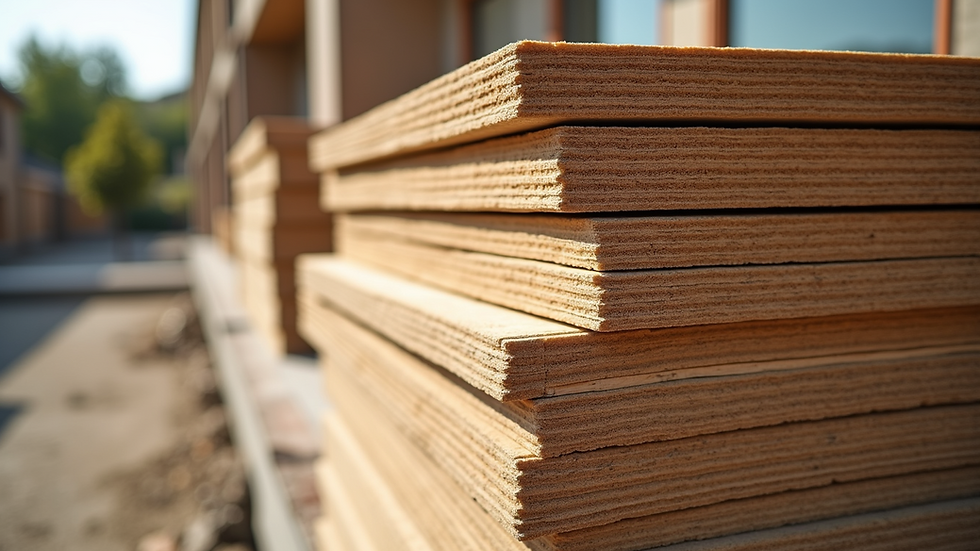How Green Energy is Shaping the Construction Industry
- Christopher Wise

- Aug 19
- 3 min read
The construction industry is undergoing a significant transformation as green energy becomes a central focus. This shift is not only about reducing environmental impact but also about improving efficiency, cutting costs, and meeting new regulations. Green energy technologies and practices are reshaping how buildings are designed, constructed, and operated. This article explores the key ways green energy is influencing the construction sector and what this means for the future.
The Role of Green Energy in Modern Construction
Green energy refers to power generated from renewable sources such as solar, wind, geothermal, and biomass. In construction, integrating these energy sources helps reduce reliance on fossil fuels and lowers carbon emissions. Builders and developers are increasingly adopting green energy to create sustainable buildings that consume less energy and produce fewer pollutants.
One major impact of green energy in construction is the rise of energy-efficient building designs. These designs incorporate natural lighting, improved insulation, and ventilation systems that reduce the need for artificial heating and cooling. For example, solar panels installed on rooftops can generate electricity to power the building, while geothermal heat pumps can regulate indoor temperatures efficiently.
Additionally, green energy encourages the use of eco-friendly materials. Materials like recycled steel, bamboo, and low-VOC (volatile organic compound) paints contribute to a healthier environment and reduce the carbon footprint of construction projects.

Benefits of Green Energy in Construction
The adoption of green energy in construction offers numerous benefits that extend beyond environmental concerns. Here are some of the most significant advantages:
Cost Savings: Although initial investments in green technologies can be higher, long-term savings on energy bills are substantial. Buildings powered by renewable energy often have lower operating costs.
Regulatory Compliance: Many regions now require new buildings to meet energy efficiency standards. Using green energy helps developers comply with these regulations and avoid penalties.
Increased Property Value: Sustainable buildings tend to have higher market value and attract environmentally conscious buyers or tenants.
Healthier Living Spaces: Green construction practices improve indoor air quality and reduce exposure to harmful chemicals, benefiting occupants' health.
Reduced Carbon Footprint: By using renewable energy sources, construction projects contribute less to global warming and pollution.
To maximize these benefits, construction companies are turning to sustainable energy solutions that integrate renewable energy systems with smart building technologies.

Who is the CEO of sustainable energy for all?
Sustainable Energy for All (SEforALL) is a global initiative aimed at ensuring universal access to modern energy services, improving energy efficiency, and increasing the use of renewable energy. As of the latest information, the CEO of SEforALL is Damilola Ogunbiyi. She has been instrumental in driving the organization's mission to accelerate the transition to sustainable energy worldwide.
Under her leadership, SEforALL has partnered with governments, businesses, and civil society to promote policies and investments that support green energy adoption. Her work highlights the importance of leadership in advancing sustainable energy goals within industries like construction.
Practical Ways Construction Companies Can Embrace Green Energy
Construction companies looking to integrate green energy into their projects can take several practical steps:
Conduct Energy Audits: Assess the energy needs and consumption patterns of buildings to identify opportunities for renewable energy integration.
Incorporate Solar and Wind Power: Design buildings with solar panels or small wind turbines to generate on-site electricity.
Use Energy-Efficient Appliances and Systems: Install LED lighting, energy-efficient HVAC systems, and smart thermostats to reduce energy use.
Select Sustainable Materials: Choose materials with low environmental impact and high durability.
Implement Water Conservation Measures: Use rainwater harvesting and greywater recycling to reduce water consumption.
Train Staff on Green Practices: Educate construction teams about sustainable methods and technologies.
By following these steps, companies can reduce costs, improve project sustainability, and meet growing market demand for green buildings.

The Future of Green Energy in Construction
The future of the construction industry is closely tied to advancements in green energy. Emerging technologies such as energy storage systems, smart grids, and building automation will further enhance energy efficiency and sustainability. Additionally, government incentives and stricter environmental regulations will continue to drive the adoption of renewable energy in construction.
Innovations like 3D printing with sustainable materials and modular construction methods also promise to reduce waste and energy consumption. As awareness of climate change grows, consumers and investors will increasingly favor green buildings, making sustainability a competitive advantage.
In summary, green energy is not just a trend but a fundamental shift in how construction projects are planned and executed. Embracing this change will lead to healthier environments, cost savings, and a more resilient built environment.
By integrating green energy into construction practices, the industry is paving the way for a sustainable future. Whether through solar power, energy-efficient designs, or eco-friendly materials, the benefits are clear and far-reaching. For more insights on sustainable building and energy innovations, explore sustainable energy solutions and stay informed about the latest trends shaping the construction landscape.




Comments